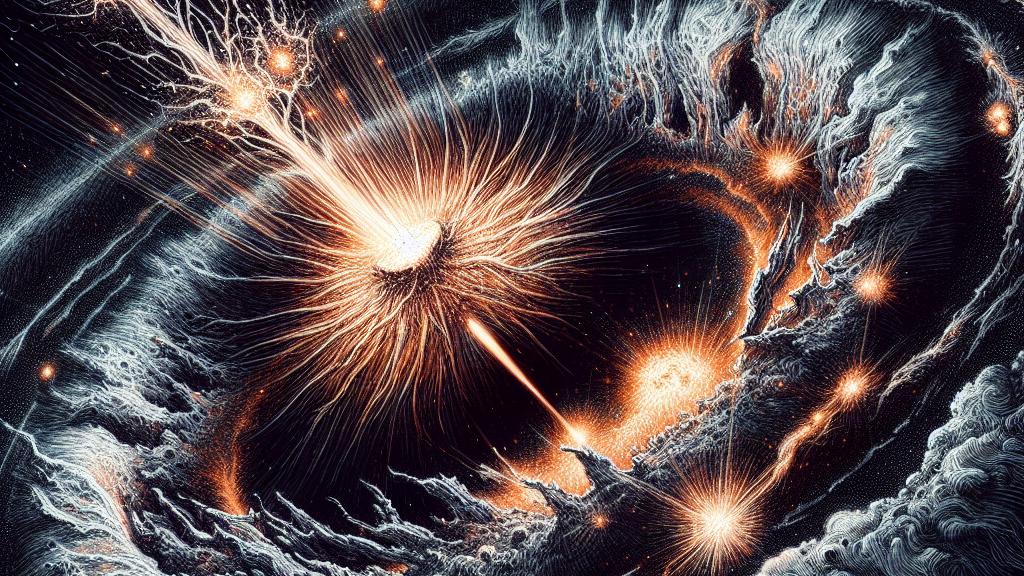New Model for Understanding Astronomical Explosions
Overview
- A groundbreaking model enhances our understanding of cosmic explosions and their mechanics.
- Eric Coughlin's innovative approach tracks light emissions, revolutionizing the detection of supernovae.
- Exciting insights from these explosions provide vital clues to the universe's elemental origins.

Understanding Astronomical Explosions
In a remarkable study, Eric Coughlin, an assistant professor at Syracuse University, investigates the spectacular yet violent deaths of massive stars—events that culminate in awe-inspiring phenomena like supernovae. Imagine a core-collapse supernova where a colossal star's core succumbs to gravity, triggering a powerful explosion that sends a torrent of hot debris, known as ejecta, racing into the cosmos. Coughlin's groundbreaking model not only clarifies these explosive processes but also meticulously tracks the intricate interactions over time. By analyzing the resulting light emissions, astronomers can unlock essential secrets about these celestial events. Supernovae do more than dazzle; they are pivotal in creating and distributing the universe's heavy elements, which ultimately form the building blocks of life as we know it.
Significance of the Research
The implications of Coughlin's work are transformative; his model provides astronomers with the essential tools to predict and investigate transient cosmic events—those fleeting moments marked by rapid brightness and structural changes. Consider the impending nova T Coronae Borealis—a unique star poised to erupt. Having slept for nearly 80 years, it offers astronomers a rare opportunity to study the fiery rebirth of a white dwarf. Meanwhile, the upcoming Legacy Survey of Space and Time (LSST) at the Vera C. Rubin Observatory nestled in the breathtaking Andes Mountains of Chile stands to capture an unprecedented wealth of astronomical data. With superior technology, scientists will witness the delicate nuances of these cosmic phenomena, enriching our comprehension of the intricate mechanics that govern otherworldly explosions.
Future Implications
As we venture into the vast unknown, the ongoing exploration of cosmic explosions reveals thrilling potential for scientific breakthroughs. Advanced telescopes, including the NASA Fermi Gamma-ray Space Telescope, are stepping into the spotlight, preparing for monitoring nova eruptions and systematically collecting critical data from the cosmos. These explosive events release energy on an astonishing scale, comparable to trillions of atomic bombs, making their study not just captivating but essential for our understanding of the universe. By unraveling the complexities of these phenomena, we can uncover the origins and distributions of heavy elements that permeate our universe. Ultimately, insights drawn from these cosmic spectacles promise to refine existing models of stellar evolution—giving us a closer look at the enigmatic processes that generate neutron stars, black holes, and the extraordinary physics of our universe. With each discovery, the quest deepens, fueling our imagination and inspiring generations to explore the stars.

Loading...